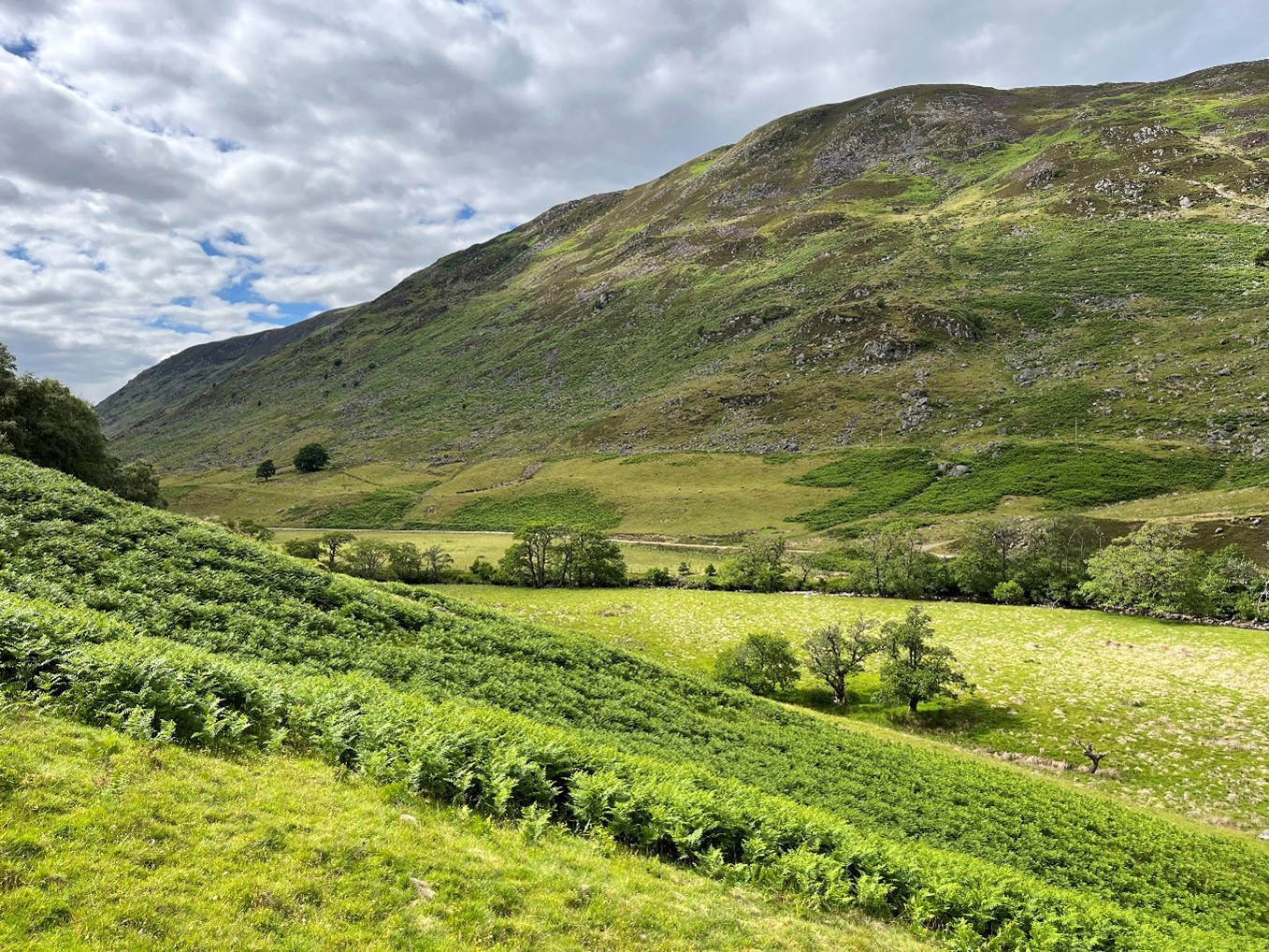The problem is, in modern Britain, we rarely have the natural landscapes or processes that allow effective succession to play out unencumbered. A warming climate and the way we farm livestock (particularly sheep) in this country have exacerbated the problem. This is because sheep preferentially browse tree saplings but, unlike cattle or pigs, do not trample or uproot bracken. As a result, bracken has come to dominate ever larger tracts of ground and, once it takes hold of an area, it creates a wasteland – a species-poor, tick-harbouring habitat that is little use to man or beast, which undermines sheep grazing and requires the repeated use of herbicides just to hold the line.
So, what’s the opportunity here? Well, one helpful aspect of bracken cover is that it likes mineral soils. As a result, its distribution effectively creates visual maps of where woodland and trees used to exist in our landscapes, and where they could exist again. If every bit of bracken-dominated hillside across Scotland was reforested, we’d create an incredible network of woodland and scrub habitats, covering more than 130,000 hectares, and with almost no loss of currently grazed land. In these constrained times, that would be a massive win.

Image showing the spread of bracken across sheep-grazed hillsides in the Scottish Highlands. Photo credit – Matthew Hay
The challenge is that where bracken has come to dominate, completing the successional journey to woodland can be extremely difficult. It requires the exclusion of wild herbivores like deer, control of the bracken itself and / or a different approach to livestock farming. Unpalatable as it may be, the targeted use of herbicides like asulam will probably also be key in enabling any transition from bracken wastes to woodland, as long as its spraying is backed up either by tree planting or by the sustained actions of people, cows and pigs.
Politicians and land managers alike will need to embrace these complicated, integrated solutions because, with every hectare of land as valuable as it is, we cannot afford to be ceding so much to one fickle fern.





















